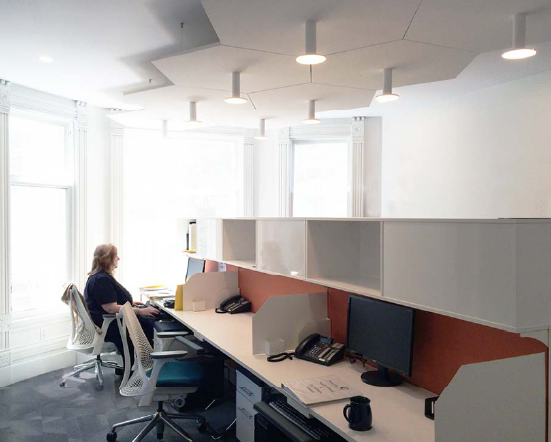Natural light plays a crucial role in enhancing the work environment within office spaces. By integrating natural light into office design, businesses can improve employee well-being, productivity, and overall satisfaction.
Increased Productivity
Natural light has been shown to boost employee productivity levels.
Research indicates that access to natural light in the workplace leads to higher levels of concentration and efficiency among employees. Natural light reduces fatigue and increases alertness, allowing workers to stay focused for longer periods. In contrast, poorly lit workspaces can lead to distractions and decreased motivation. Furthermore, offices that incorporate large windows and skylights tend to create open, inviting atmospheres that foster creativity. Overall, maximizing natural light can result in measurable gains in productivity across various sectors.
Enhanced Well-Being
Exposure to natural light is linked to improved mental health.
Natural light exposure has significant psychological benefits, including reduced stress and better mood regulation. Employees who work in environments filled with sunlight report lower levels of anxiety and higher overall job satisfaction. Additionally, natural light helps regulate circadian rhythms, leading to improved sleep patterns. This, in turn, results in employees arriving at work feeling more rested and energized. A focus on incorporating natural light in office design demonstrates a commitment to the well-being of staff.
Better Energy Efficiency
Utilizing natural light can lead to significant energy savings.
Integrating natural light into office spaces reduces reliance on artificial lighting systems, which can substantially lower energy costs. Buildings designed to optimize daylight use can decrease electricity consumption, particularly during daytime hours. Moreover, the reduced need for artificial lighting translates into a lower environmental impact, aligning with corporate sustainability goals. Financially, the initial investment in good architectural design for natural lighting can lead to long-term savings for companies. Harnessing natural light is not only beneficial for employee health, but also for the bottom line.
Improved Aesthetic Appeal
Natural light enhances the aesthetic quality of office spaces.
Designing offices with ample natural light creates inviting environments that attract clients and employees alike. Spaces filled with sunlight appear more open and welcoming, which can significantly enhance the overall workplace atmosphere. Additionally, natural light helps highlight architectural features and interior design elements, making spaces feel more vibrant. When offices appear visually appealing, it not only improves employee morale but can also enhance the company’s public image. An aesthetically pleasing environment encourages collaboration and teamwork, fostering a more cohesive workplace culture.
Increased Employee Retention
Natural light contributes to higher employee retention rates.
A workspace that prioritizes natural light is more likely to foster employee loyalty and reduce turnover rates. When employees feel comfortable and valued in their work environment, they are less inclined to seek opportunities elsewhere. The benefits of natural light, such as improved mood and well-being, play a significant role in overall job satisfaction. Furthermore, companies that invest in quality office design show their commitment to creating a positive workplace, making them more attractive to current and prospective employees. Long-term retention of skilled workers is essential for maintaining organizational knowledge and effectiveness.
Influence on Collaboration
Natural light encourages collaboration and interaction among employees.
Office spaces bathed in natural light promote openness and communication, which can lead to enhanced teamwork. Well-lit environments help to break down barriers and encourage spontaneous interactions, aiding in collaborative efforts. Such atmospheres enable employees to feel more connected to one another, fostering a sense of community within the organization. Additionally, designing open spaces with natural lighting stimulates creativity and innovative thinking. Ultimately, a culture of collaboration enhances problem-solving capabilities and drives the success of projects.
Adaptability of Space
Natural light facilitates the flexibility and adaptability of workspaces.
Workspaces that incorporate natural light can be easily configured for various functions and activities. This adaptability is increasingly important in modern work environments where flexibility is key to meeting evolving business needs. Areas that are well-lit can accommodate both solitary work and collaborative tasks without the need for significant alterations. Natural light encourages the design of multi-functional spaces that can be used for meetings, socializing, or focused work as needed. This flexibility helps organizations respond dynamically to changing demands while maximizing the use of available resources.
Harnessing the benefits of natural light in office design is essential for enhancing employee productivity, well-being, and satisfaction. By focusing on this aspect of workplace design, businesses can create environments conducive to collaboration, innovation, and longevity. Ultimately, the integration of natural light not only elevates the office aesthetic but also fosters a healthier, more engaged workforce.

